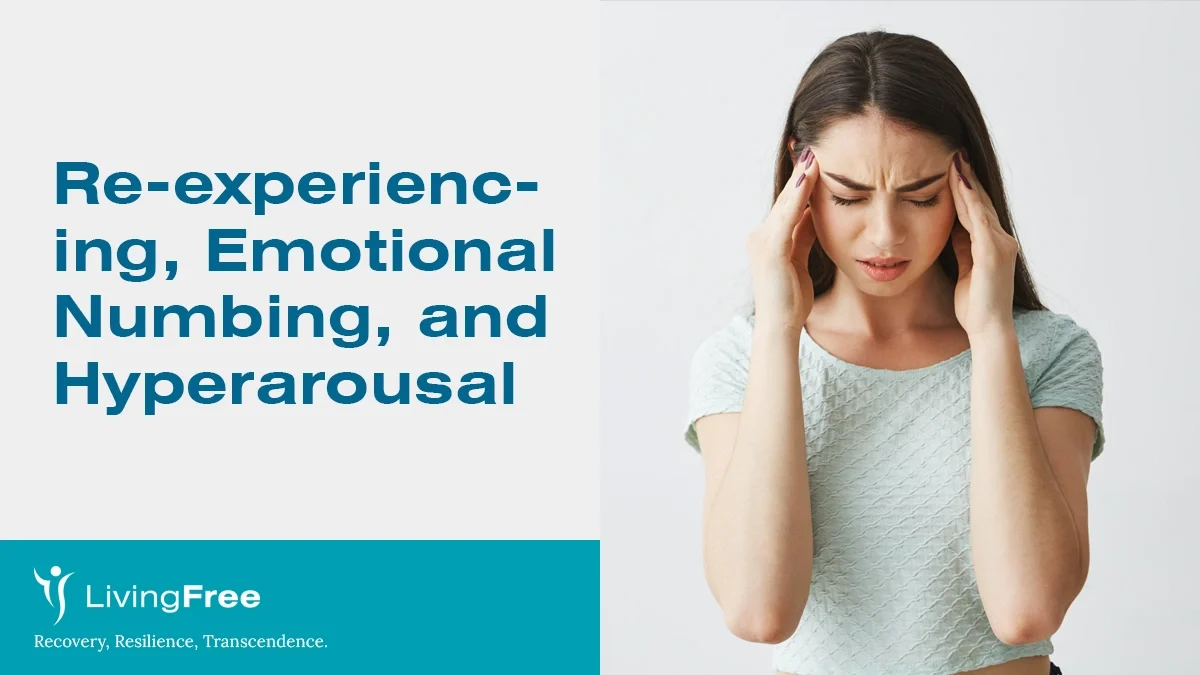Post-Traumatic Stress Disorder (PTSD) is a psychiatric condition that may develop after experiencing or witnessing traumatic events. While external triggers vary, PTSD often centers around three major symptom clusters: re-experiencing, emotional numbing, and hyperarousal. These clusters form the clinical backbone of PTSD and significantly impact emotional regulation, interpersonal relationships, and quality of life.
This article explores how each symptom cluster functions, their biological underpinnings, and how they interact in the brain.
The Core Symptom Clusters of PTSD
The DSM-5-TR and major clinical sources categorize PTSD into four main clusters:
- Re-experiencing
- Avoidance
- Emotional numbing
- Hyperarousal
While avoidance is behavioral, re-experiencing, numbing, and hyperarousal reflect distinct neurophysiological and emotional processing disruptions.
Re-experiencing: When Trauma Intrudes on the Present
Re-experiencing involves the involuntary replay of traumatic experiences. Common signs include:
- Flashbacks
- Nightmares
- Intrusive, distressing memories
- Physical reactions such as nausea or trembling
These episodes are often triggered by sensory or emotional reminders of the trauma. Feelings of guilt or shame are also common.
Neural Insight
Neuroimaging data show that individuals with prominent re-experiencing symptoms demonstrate increased neural habituation to repeated negative emotional stimuli. This response is linked to activation in brain areas such as the anterior cingulate cortex (ACC) and inferior frontal gyrus (IFG), suggesting active emotional suppression strategies.
While this might reduce immediate reactivity, it may contribute to rebound effects and worsening of intrusive symptoms over time.
Emotional Numbing: A Disconnect From Self and Others
Emotional numbing refers to a reduced ability to feel or express emotion. People with PTSD may experience:
Detachment from loved ones
Loss of interest in previously enjoyed activities
Difficulty feeling positive emotions
Emotional flatness or withdrawal
Fast Emotional Transitions
Research from Yale indicates that emotional numbing may co-exist with sudden transitions to intense negative emotional states. This dynamic explains how someone may appear emotionally “shut down” but later exhibit outbursts or panic⁴. These rapid shifts are thought to result from a higher threshold for emotional reactivity caused by chronic hypoarousal, followed by an “overshoot” when the threshold is breached.
Hyperarousal: Stuck in High Alert
Hyperarousal keeps the body in a state of chronic tension. Key symptoms include:
- Insomnia or poor sleep
- Irritability or anger
- Hypervigilance and exaggerated startle response
- Panic or anxiety
- Risk-taking behaviors such as reckless driving
- Trouble concentrating
Brain’s Failure to Reset
A landmark NIH study shows that hyperarousal is associated with diminished neural habituation to emotional stress. Key brain regions—such as the ventromedial prefrontal cortex (vmPFC) and anterior insula—remain highly reactive, failing to “cool down” even after repeated exposure.
This neurobiological pattern aligns with attentional biases in PTSD: individuals focus more intensely on potential threats and struggle to disengage from them.
How Re-experiencing and Hyperarousal Interact
Though both reflect heightened emotional sensitivity, these two clusters affect the brain in opposing ways:
- Hyperarousal → Less habituation (sustained reactivity)
- Re-experiencing → More habituation (potential suppression)
McCurry et al. found that when hyperarousal severity outweighs re-experiencing, habituation is most impaired³. This suggests that re-experiencing symptoms may, in some contexts, buffer the damaging effects of hyperarousal.
Dissociative Subtypes and Complex PTSD Profiles
PTSD may involve dual symptom subtypes: hyperarousal/re-experiencing and dissociation. A case published in The Journal of Neuropsychiatry illustrated a child alternating between dissociative states (memory loss, shutdown) and hyperarousal outbursts (rage, physical tension).
These divergent symptoms reflect distinct neural circuits:
- Hyperarousal → Amygdala hyperactivity and vmPFC underactivity
- Dissociation → Dorsal ACC overmodulation and parietal dysfunction
Recognizing these patterns can guide more tailored treatment strategies.
When to Seek Help
Symptoms that persist longer than one month or interfere with daily life warrant clinical attention. Seek help if you or a loved one experiences:
- Flashbacks or intrusive thoughts
- Detachment or emotional numbness
- Insomnia, panic, or chronic tension
- Risky behaviors or thoughts of self-harm
Final Thoughts
Understanding the nuances between re-experiencing, emotional numbing, and hyperarousal offers a clearer picture of PTSD’s complexity. These symptom clusters are not just diagnostic—they reflect how trauma reshapes emotional perception, brain function, and daily behavior.
Recognizing these patterns is a powerful first step toward healing. With the right support, people with PTSD can learn to manage these symptoms and regain control over their lives.


